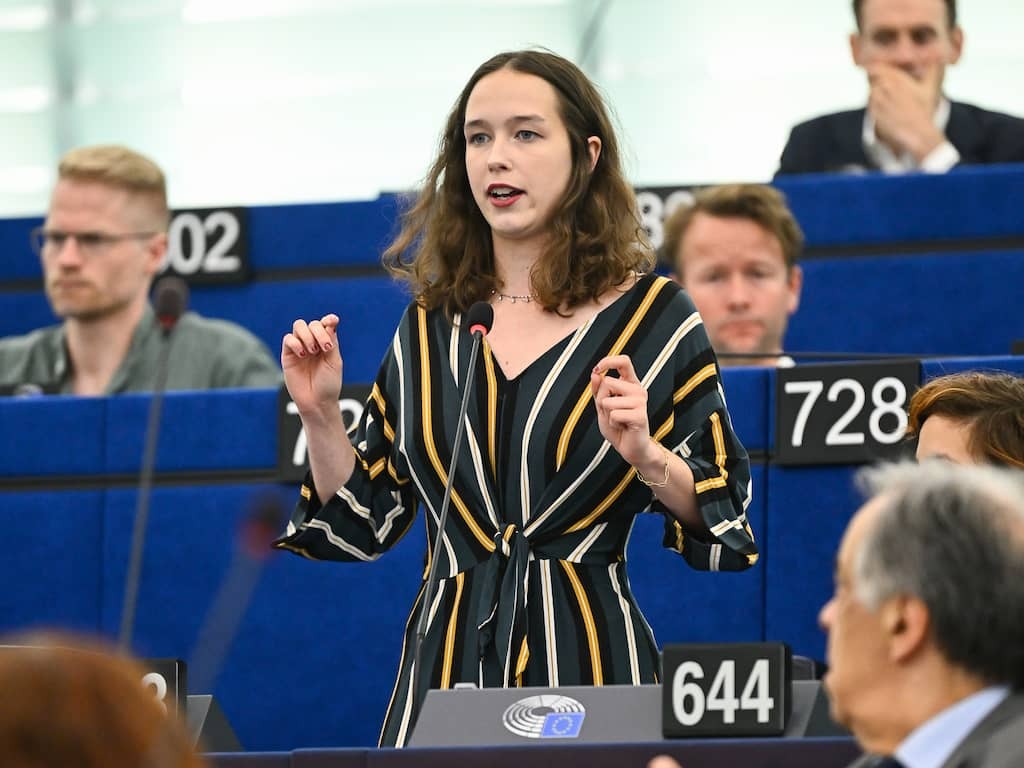
After years of ambitious climate policy, the European Parliament and the EU member states are now far from united on new climate goals for the next fifteen years. It is questionable whether the EU can still travel to the next climate summit as a climate leader.
On the diplomatic stage, the European Union likes to present itself as a leader in the field of climate. Even if question marks are raised, for example because of a large shortage of climate support for developing countries, Europe can still point to its sharply declining CO2 emissions and ambitious climate law.
For a long time, it seemed that the EU would stick to that line. Already upon taking office in 2023, European Commissioner Wopke Hoekstra promised that he would support an ambitious climate goal for 2040: 90 percent less greenhouse gas emissions than in 1990, as scientific advisors to the European Commission had recommended.
But since the 2024 European elections, Hoekstra has had a hard time actually getting that goal into the European climate law. He had to search for a long time for a compromise that could count on the support of enough MEPs and member states.
Hoekstra’s own political family, the Christian Democrats, is namely reducing its support for ambitious climate policy. The largest group in the European Parliament is now placing more emphasis on support for the ailing industry, which is struggling to compete with China and the United States.
Radical Right Wing Gets Key Role
It already resulted in a watered-down proposal. That still promises 90 percent CO2 reduction, but with various caveats. The most important is that it will be possible to ‘buy in’ a limited part of the emission reduction in other countries.
Yet the compromise is not yet watertight, as two remarkable developments in the European Parliament this week showed. First, the radical right-wing and climate-skeptical Patriots for Europe, the EU group that also includes the PVV, managed to gain a key role in the handling of the climate goal.
The Patriots will provide the so-called rapporteur, who has an important guiding role in the negotiations on the proposal. Which party may appoint such a rapporteur is determined by a bidding war. In that, the Patriots turned out to have used the most points.
It is an important strategy change, Politico analyzed. Previously, the radical right did not actively interfere with the handling of this type of proposal that those parties are vehemently against.
To still sideline the Patriots, left-wing groups introduced a motion on Wednesday to treat the climate goal with urgency. That would reduce the influence of the Patriots and ensure that they cannot use their role to delay the treatment. But the Christian Democrats voted, together with (far) right, against the motion.
‘Follow Normal Procedure’
“We do not want unreasonable delays, we do not want blockades. We simply want to work on this proposal with the normal procedures,” said CDA MEP Jeroen Lenaers before the vote. But left-wing groups were furious. They say that the most important European center party is linking the fate of the climate law to the radical right, instead of to the broad coalition that brought about the earlier climate policy.
PVV MEP Sebastiaan Stöteler says he does not yet know how the treatment of the climate proposal will proceed, because the rapporteur still has to be chosen. His fellow MEP Tom Vandendriessche (Vlaams Belang) told the VRT that the Patriots want to reduce the EU climate policy “to realistic proportions.”
GroenLinks-PvdA MEP Mohammed Chahim hopes that a deal with the Christian Democrats can still be reached in the coming months. He does not expect that the Patriots will actually be able to exert influence over EU climate policy. “In the long term, there will never be a deal in which they are involved.”

Member States in Charge
Due to the internal bickering, the European Parliament threatens to sideline itself in the run-up to the UN climate summit in Brazil, next November. Well before that summit, all countries must submit their climate plans for 2035. It is an important measuring moment, because it will show what kind of climate future the world is facing.
Hoekstra wants to derive the European plan from the ambitious 2040 goal. It would mean that emissions must have decreased by 72.5 percent in ten years. But if there is no clarity about the plans for 2040 before the climate summit, the discussion about the UN goal for 2035 can also be opened up. Poland, for example, wants to put on the brakes and supports a much more limited CO2 reduction of 66 percent in 2035.
Formally, the European Parliament has no role in determining the UN goal. But in the past, the people’s representatives were able to put pressure on the member states by calling for ambitious climate policy with a broad majority. Due to the lack of a deal on the climate goal for 2040, that may now be too late.
“The European Parliament could have sent a signal this week that there is broad support for this proposal, which has already been extensively presented to everyone,” says Elisa Giannelli of climate think tank E3G. “They have not done that, and with that they have missed their chance to tip the scales.”
EU President Denmark hopes to reach a deal on the climate goal on September 18.